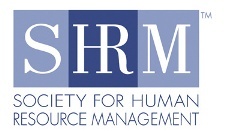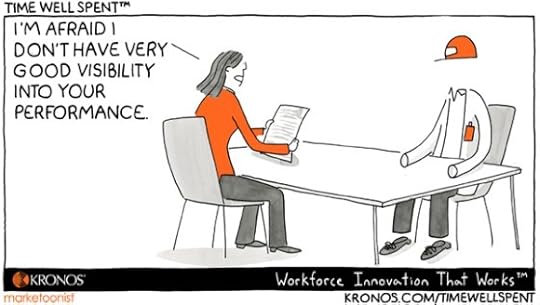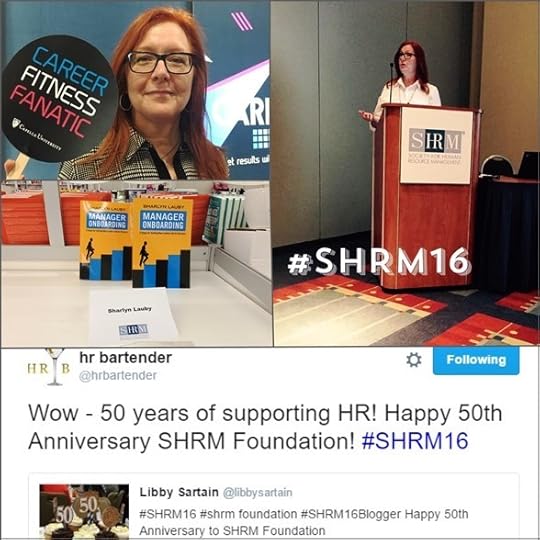Sharlyn J. Lauby's Blog, page 154
July 14, 2016
Are Learning Goals Better Than Performance Goals
Not all goals are the same. That was a big takeaway for me from this year’s WorkHuman conference, hosted by Globoforce. Maybe on some level I knew this, but speaker Caroline Adams Miller really made me focus on the topic by discussing the difference between performance and learning goals.
Performance goals are ones that focus on an outcome. The outcome (or goal) is based on performance. Examples would be to achieve a detailed score on a competency exam or be awarded a specific form of recognition. An advantage of performance goals is the result. Critics of this approach might say the outcome can distract an individual from learning and therefore, the long-term benefit.
Obviously, learning goals focus on the learning. What is being learned is the key. If we use the same example above, a learning goal would be to focus on learning the competency because if we do, then ultimately we’ll get the score we’re trying to achieve. And the subsequent recognition we’re looking for.
The question becomes is one type of goal better or more important than another?
I totally understand the idea that, if our focus is to become a lifelong learner, then having learning goals is important. We need to understand how to evaluate our learning needs, set learning goals, make learning plans, and finally monitor our progress.
But once we’ve started the learning process, I think we need to add performance goals. And I mean add, not replace one for the other. Learning goals help us get started and performance goals help us get better.
For example: I am constantly trying to get better with my Spanish. I’ve taken courses and even immersion courses, but it’s very hard to practice when you work from home (an English-speaking home). So my learning goal is to work on my Spanish. As a result, I’ve started using an app called Duolingo, which allows me to take a Spanish lesson every day. Now, when Duolingo tells me I’m on a 21-day lesson streak or that I’m 33 percent fluent, that’s the performance goal. Because I’m constantly trying to make that score better.
To be successful, we need both performance and learning goals
Click To Tweet
In order to be successful, we need to set both learning and performance goals. The key is understanding which one you’re setting and why. Because if you create garbage goals, then you won’t get the results you’re looking for.
Image taken by Sharlyn Lauby somewhere off the coast of Miami Beach
The post Are Learning Goals Better Than Performance Goals appeared first on hr bartender.






July 12, 2016
Why #HR Should Pay Attention to the #Election2016 Political Conventions
(Editor’s Note: The Republican National Convention will be held in Cleveland, Ohio on July 18-21, 2016. The Democratic National Convention will be held in Philadelphia, Pennsylvania on July 25-28, 2016.)
Before you move past this post because of its political nature, I hope you’ll hear me out. I know a few some many whole lot of people are tired of politics. Especially this year’s politics. Several of my Facebook friends have declared they are taking “news sabbaticals” because … well, I’m sure you can guess why. But I’d challenge us to view the upcoming political conventions with a new outlook – an HR outlook.
During this past Society for Human Resource Management (SHRM) Annual Conference, I had a chance to ask keynote speakers Paul Begala, political consultant and former advisor to President Bill Clinton, and Tucker Carlson, political news correspondent and editor-in-chief of The Daily Caller, why HR professionals should pay attention to the upcoming conventions. All joking aside, and they said the same thing: that freedom of speech is important and we can learn by listening to others’ point of view.
#SHRM16 Advocacy Day official selfie! #HR delegates getting ready to carry #21CenWork Principles to Capitol Hill pic.twitter.com/DvfXM79GWo
— SHRM A-Team (@SHRMATeam) June 22, 2016
I will admit, sometimes this isn’t the easiest thing to do. Today’s post isn’t to tell you what convention to watch, what television network to watch, or what candidate to support. It’s for us to remember that being engaged with the political process is important. So I asked Mike Aitken, vice president of government affairs at SHRM, if he could give us an education about the upcoming political conventions. Luckily, he said yes.
Mike, it’s been a while since my high school civics class. Can you briefly describe a “political convention” and what happens during it?
[Aitken] A political convention is held every four years in the United States by most of the political parties that will be fielding nominees in the upcoming U.S. presidential election. The formal purpose of such a convention is to select the party’s nominee for President, as well as to adopt a statement of party principles and goals that reflect that party’s public policy priorities. This document is also referred to as the platform.
Let’s take this next question in two parts. First, why should individuals be interested in what happens at the conventions? And second, why should HR pros pay attention to what happens during the conventions?
 [Aitken] One thing is certain: This year will be a landmark year for our country, and one of the individuals who is nominated to be President from the Republican or Democratic convention will be sworn in as President on January 20, 2017. The President’s public policy agenda will affect every person in the country and it’s important to understand their policy proposals to address issues such as the economy, tax reform, immigration and health care reform to name a few domestic issues. It’s important to tune-in and be an informed voter.
[Aitken] One thing is certain: This year will be a landmark year for our country, and one of the individuals who is nominated to be President from the Republican or Democratic convention will be sworn in as President on January 20, 2017. The President’s public policy agenda will affect every person in the country and it’s important to understand their policy proposals to address issues such as the economy, tax reform, immigration and health care reform to name a few domestic issues. It’s important to tune-in and be an informed voter.
From the HR professional’s perspective, workplace issues are front and center of the debate during this already-lively presidential and general election season and we expect that to continue during the conventions. The HR voice needs to be part of the local, state and national conversation in the months ahead and that includes at the conventions. SHRM believes so adamantly in the power of the HR voice being part of the conversation that SHRM advocacy will continue to be a major focus of the organization this election year.
As an HR professional, when working to comply with all the various federal and state laws and regulations, how many times have you thought, “What were the policymakers thinking when they enacted this law?”
As we look to welcome a new presidential administration and prepare for a new Congress in 2017, we at SHRM, and you as HR leaders, need to come together through advocacy. We need to collectively educate candidates and potential future leaders on the evolving nature of the workplace, and work together to address workplace developments in Washington. That work starts at the conventions.
SHRM has a history of attending both the Republican and Democratic conventions. Since SHRM is a non-partisan organization, why be there? And what are SHRM’s goals during the event?
[Aitken] SHRM will be on the ground at both the Republican National Convention in Cleveland, Ohio, and the Democratic National Convention in Philadelphia, Pa. As mentioned above, workplace issues have been at the forefront of discussion of the presidential campaign and we expect that trend to continue at the conventions.
As a result, participation in the conventions gives SHRM a unique opportunity to showcase the HR profession and our thought leadership on these key workplace issues; participation also allows us to build and enhance relationships with elected officials attending the conventions; and finally, participation by SHRM ensures that as the only organization representing the HR profession at the national conventions, the HR voice is heard.
In addition, SHRM will be hosting member activities and events with our SHRM State Councils in Ohio, Pennsylvania and New Jersey and our local chapters at both political conventions, as a way to showcase the breadth of the local network, and to raise awareness of SHRM and its members.
We also will be sharing with elected officials at the conventions our recently released Principles for a 21st Century Workplace (PDF). These Principles focus on three key public policy principles that are fundamental to the workplace in the 21st century. These principles are:
• Innovative,
• Fair and,
• Competitive
These Principles are based on SHRM public policy positions outlined in our 2016 Guide to Public Policy Issues and cover policy solutions on workplace flexibility, compensation equity, modernizing labor-management relations, employer-sponsored benefits, improving health care, closing the skills gap and reforming immigration. The Principles can be found at advocacy.shrm.org and on Twitter, using the hashtag #21CenWork.
Will the SHRM Advocacy team (aka A-Team) be sending out any special updates during the conventions to keep us updated on what’s taking place? How can I stay on top of the news?
[Aitken] SHRM will definitely be sharing its experiences at both national conventions this month. In the meantime, if you need inspiration this election season, check out this post by SHRM A-Team Leader Hector Moncada of California titled, “‘Why Should I Vote?’ HR Needs to Have Say this Election Year.”
SHRM’s state partners and A-Team leaders will continue to share best practices about how to engage before Election Day in November. In addition, for all A-Team volunteer leaders, as part of the quarterly webinar strategy sessions through the program, the October 4th Quarter A-Team webcast will focus solely on how to make a difference as a constituent and as an HR professional this fall and beyond.
This is why #HR pros need to pay attention to the #Election2016
Click To Tweet
Last question. Not exactly related to conventions, but to the election process. I came across an article about the Bipartisan Policy Center working with organizations to mobilize their employees to register to vote. Starbucks and Marriott are on board with this. Does SHRM offer any resources for learning more about employees and voting?
[Aitken] According to new research from SHRM, 86 percent of HR professionals indicated their organizations allowed employees either paid (53 percent) or unpaid (33 percent) time off to vote. Voting is a right and privilege in the U.S., and it’s important.
As we near the 2016 elections, consider treating current lawmakers and candidates like you would a new hire. Provide them with all the information, resources and support possible as they look to serve you and your state. And know that SHRM is here to offer you the support you need to be an effective SHRM A-Team member. Please take a moment to visit SHRM’s HR Policy Action Center online at advocacy.shrm.org/elections for all the resources you need to cast your vote as an HR professional this election year.
My thanks to Mike and the rest of the SHRM Governmental Affairs team for the work they do. Regardless of your politics, we need to play an active role in the process because we really can impact change – change that matters to our profession. You can stay in touch with the SHRM A-Team by following them on Twitter at @SHRM and @SHRMATeam or check out the hashtags: #21CenWork and #AdvancingHR.
SHRM logo used with permission
The post Why #HR Should Pay Attention to the #Election2016 Political Conventions appeared first on hr bartender.






July 10, 2016
Identifying Team Engagement – Ask #HR Bartender
We’ve talked often about individual engagement. But what about teams? That’s what this reader note is all about.
Hi Sharlyn. What are the most important questions a company should ask to know if the team is engaged? What are the tale-tell signs that company should look out for on disengagement?
I think this is a great question. So much of the work we do involves teams. Yes, individual work is necessary and important. But often big projects or cross-functional projects involve teams. However, before trying to understand the level of team engagement, I think there are some prerequisites that need to be examined:
Are the individual employees engaged? I’m struggling to think of a situation where an employee is not engaged with the company on an individual level but they’re engaged with the company as part of a team. I can think of plenty cases where an employee is happier working with a group, but that doesn’t necessarily mean they’re engaged.
Is the team leader engaged? In most cases, the team leader sets the tone for the group. If the team leader is disengaged, I believe that will have an impact on the group’s engagement level. It’s possible individual employees will be engaged with the company, but when asked to work with a disengaged leader, they could find themselves frustrated or apathetic.
Has the team been properly developed? High-performing teams have been given the tools and training to be successful. Is it possible to put a group of people in a room and get a result? Yes. But frankly, I think that’s the exception to the rule. High-performing teams have been given the benefit of training in the areas of conflict management, change management, decision making, problem solving, etc.
Does every member of the team understand their purpose? Not only does the team need the resources to work together, but so does each individual. It’s terrible to say but sometimes, in an effort to make everyone feel welcome, we put too many people on a team. Or the wrong people on the team. Individuals are confused about their role and how they make the best contribution.
I believe that team engagement (or disengagement) is the result of team dynamics. Organizations need to make sure that teams have a clear purpose, team members have defined roles, and the team has been given the tools for success. Better team engagement starts with better individual employee engagement.
Image taken by Sharlyn Lauby while attending the 2016 Great Place to Work Conference
The post Identifying Team Engagement – Ask #HR Bartender appeared first on hr bartender.






July 8, 2016
Managers Must Be Able to Identify Employee Performance – Friday Distraction
I recently wrote a post about one aspect of the performance review process that employees like – getting merit increases. Many organizations link performance reviews with pay increases so even if the performance review is boring, at the end, there’s a conversation about compensation. This certainly isn’t ideal but in some organizations, it’s reality.
In the comments for that post, one reader felt that eliminating the annual employee performance review would actually create more opportunities to discuss pay and potentially increase the number of pay increases employees could receive. So employees would not feel limited to one pay conversation each year held in conjunction with the employee’s annual review. I totally get it, but the cynical side of me isn’t quite sure that’s how it would really play out.
But the reader also made one other observation worth noting. They said “…more frequent pay raises when they are deserved for great work!” That means managers must know what great work looks like. I couldn’t help but smile when I later saw this Time Well Spent cartoon from our friends at Kronos.
The performance appraisal process is considered broken by many. Several organizations claim to have eliminated it completely. I can’t help but wonder, if managers had good visibility into the performance of their employees, would the performance review conversation look different? Is it possible that part of the challenges with the performance review process has nothing to do with the process at all?
Managers must be knowledgeable about employee performance. It’s key to delivering effective performance feedback. Whether that’s in a weekly one-on-one session or an annual performance review. Managers should be able to communicate the company’s performance standard, identify when an employee meets the standard, and coach when they do not.
The post Managers Must Be Able to Identify Employee Performance – Friday Distraction appeared first on hr bartender.






July 7, 2016
Can a Manager Praise Employees Too Much [poll]
During this year’s WorkHuman Conference hosted by Globoforce, keynote speaker Shawn Achor made the comment that employees never get tired of praise.
At first, I totally agreed. Especially when you hear statistics like the ones from the WorkHuman Research Institute that found 21 percent of respondents have never been recognized at work and 33 percent haven’t been recognized in 6 months. Even people who do not thrive on recognition, need more praise than that. It’s obvious if employees receive little or no recognition then of course they wouldn’t tire of it. (On a side note, if you want the full report, you can download it here or you can listen to this webinar with me and Derek Irvine from Globoforce.)
But if employees actually received recognition – I mean timely, specific recognition in a way that was meaningful – could it ever be too much? At that point, doesn’t it come down to what employees are being recognized for? For example, here are two pieces of recognition:
“Bob, I wanted to let you know that the report you submitted this morning for the meeting was exactly what the sales team needed. We were able to make some key decisions about the ABC account thanks to your analysis.”
“Bob, I wanted to let you know how much I appreciate you coming to work on time today. Showing up exactly at 8:30 like your schedule says is tremendously helpful to the operation”
In both cases, the recognition is timely, specific and shows the positive consequences of the employee’s actions. But I can’t help but think that the second one is a bit flat, unless the employee has been having an attendance issue. Then it’s a very welcome comment.
I don’t know that employees want praise in quantity. They do want recognition and they want it to be sincere. But I think they also want it to be deserving. So, there might be a fine line between just right and too much.
I’m curious. What are your thoughts? Could employees get tired of recognition? I hope you’ll take a moment to answer our completely unscientific poll:
I look forward to seeing your responses. I can see all sides of this situation. As always, I’ll share the results in a couple of weeks.
Image taken by Sharlyn Lauby at the Smithsonian Institution National Museum of Natural History after speaking at the 2016 SHRM Annual Conference.
The post Can a Manager Praise Employees Too Much [poll] appeared first on hr bartender.






July 5, 2016
Career Fitness: Necessary for Long-Term #HR Success
(Editor’s Note: Today’s post is brought to you by our friends at Capella University. Capella is an accredited online university dedicated to providing an exceptional, professionally-aligned education that puts you in the best position to succeed in your field. They offer bachelor’s, master’s and doctorate degrees as well as certificate programs for human resources and business professionals. Enjoy the post!)
I was reading an older article on the Society for Human Resource Management (SHRM) website recently about employee well-being. There was a quote in the article that struck me:
People who don’t feel positive about themselves or their lives don’t do extraordinary things. People who feel good about their lives do great things, for themselves and their employers.
So there’s a definite reason to focus on employee well-being. Employees who are burned out and stressed won’t perform well. And employees who do practice well-being will perform at a high level. But what does “practice well-being” mean? What does it look like?
Career fitness defined
Well-being has several components: physical, relationships, financial, community, and career. The one we tend to think of most often with well-being is physical. Physical fitness is the condition of being physically fit and healthy. It includes nutrition, exercise, sleep, etc. Physical fitness is a part of well-being.
The other parts of well-being include financial, relationships, community and career.
Now let’s talk about the last component: career. Career fitness is the idea of being capable, happy, and engaged with work. It’s about enjoying the work we do each day and feeling our work matters. Just as we need to do things to stay physically or financially fit, we have to do things to stay “career fit.”
HR’s role in career fitness
For human resources professionals, we wear two hats when it comes to career fitness. First, as part of the management team, we need to create and implement career fitness programs as part of our well-being efforts. There’s an article on the Association for Talent Development (ATD) blog that said just 24 percent of employees whose companies offer a wellness program actually participate in it. The reason? Because the focus is on wellness and not well-being.
Apply that same logic to what we’re talking about here. If we don’t take into account ALL the components of well-being, not just one or two, then we’re not dealing with the whole person. And we cannot expect our efforts to be successful. Well-being works as a way to engage and retain employees. But only when we offer opportunities that address all the aspects of well-being, such as financial literacy workshops, corporate citizenship programs, and physical fitness classes.
In addition, organizations need to offer ways for employees to practice career fitness.
Career fitness is a form of career development
The second role that HR plays in career fitness is as a participant. Once programs have been created, HR is responsible for “drinking their own champagne.” However, it’s in a very personalized way.
Many organizations have formal career development programs. Career fitness isn’t a replacement for those programs. Career development programs might include training, leadership and management development, as well as academic programs.
Career fitness is a process that the employee uses to improve. It can be used to continue learning after taking an educational course. Or to set self-learning goals for the future. Career fitness offers people a personalized, flexible learning experience.
Here’s an example: In physical fitness, Health.gov says that each week, adults should get 150 minutes of moderate-intensity aerobic physical activity or 75 minutes of vigorous-intensity aerobic physical activity or a combination thereof. It doesn’t tell you what activities to do. As an individual, you can figure that out. Choose the activities you enjoy the most.
In career fitness, organizations would make sure that employees understood the principles of career fitness and what they should do to practice career fitness. They would set expectations. Then, it’s up to the employee. I recently heard a conference speaker describe the idea as “we tell our employees they need to obtain XX hours of training each year. It’s up to them to find it and take it. But the company holds them accountable for taking training that’s valuable to their role.”
Promoting a culture of career fitness
HR and department managers need to work together to promote career fitness. The quote from the SHRM article I mentioned at the beginning applies to managers too. Stressed out managers or burned out HR functions will not send a positive message to employees. For a well-being program to work, HR and the senior management team must practice career fitness and set a good example. There’s a good reason to do so. Career fitness can lead to:
• Higher performance and productivity
• Employee promotions and organizational growth
In developing a well-being strategy, organizations have to include careers in the fitness equation. If you want to learn more about how to include career fitness in your broader well-being efforts, download this white paper, “HR Professionals: Are you practicing career fitness?” It offers detailed examples on how to develop a career fitness plan that you could use yourself or in your organization.
HR Professionals: Are You Practicing Career Fitness?
Click To Tweet
The way to achieve long-term success is by becoming fit and staying fit in our careers. That’s career fitness.
The post Career Fitness: Necessary for Long-Term #HR Success appeared first on hr bartender.






July 3, 2016
Your Job Search Doesn’t Get a Day Off
One of the hardest things to do is find a new opportunity. It doesn’t matter if you’re currently employed or not, searching for a new job takes time and can be very stressful. It also doesn’t get a day off. When looking for a job, it can feel like we need to be looking every day.
Even on a holiday.
Tomorrow is Independence Day in the United States. For those of you who might be looking for a new opportunity, here are a few posts I hope you will find helpful.
What to Do If You’re Stuck in a “Dead End” Job
Many employees know what it’s like to be stuck in a dead end job. There are some things you can do about it. We ask the experts share their tips and advice.
Managing Your Online Presence During a Job Hunt [infographic]
When you’re looking for a job, it’s important to think of your online presence. This infographic shows what recruiters are looking at and what to focus on.
What Job Title Should I Use On My Resume?
Multiple job titles with the same employer? An HR Bartender reader asks which job title to use on their resume. We go to the resume pros for the answer.
What to Do After a Bad Job Interview
Many job seekers have a bad job interview. There are things you can do if things don’t go as planned. We ask the experts to share their tips and advice.
How to Follow Up After a Job Interview
Follow up is extremely important after a job interview. But, how should you follow up? A letter or email? There’s a lot to consider to get it right.
Does Providing References Mean You’ve Got the Job
You’re looking for a new job. The interview went well. Now they want references. Does that mean you got the job? The experts share their thoughts and tips.
A job search is serious business. In fact, how many times have you heard looking for a job IS a full-time job?! But just like it’s important to take a break and refresh with our full-time jobs, we need to do that with our job search. So maybe our job search occasionally needs a little time off. I think it could make us better at it.
Image take by Sharlyn Lauby after speaking at the 2016 SHRM Annual Conference
The post Your Job Search Doesn’t Get a Day Off appeared first on hr bartender.






July 1, 2016
Quick Shots for #HR and #Business Pros – #SHRM16 Edition
This year’s Society for Human Resource Management (SHRM) Annual Conference and Expo was a special one for me. Besides being in one of my favorite cities – Washington D.C. – I had the opportunity to do some things I haven’t done before. Which was pretty awesome since the conference theme was all about “breakthroughs.”
I spoke at a pre-conference workshop. Aliah Wright, Jonathan Segal, Craig Fisher, Andrew Morton, and I conducted a session on social strategies for human resources professionals.
My second book launched! It’s called “Manager Onboarding: 5 Steps for Setting New Leaders Up for Success.” The book was published by SHRM and can be found in the SHRMStore.
Finally, a huge thank you to everyone who attended my breakout session on manager onboarding. I’m thrilled that so many organizations are looking to create manager onboarding programs.
The expo hall was packed this year! It was obvious that HR people came ready to talk business. I know some may throw shade at vendors and conference swag, but from a marketing perspective, swag does its job to get people in the expo hall. I especially like it when vendors, like HireRight, give away swag that provides an important service. I will be keeping my LifeStraw handy during hurricane season.
If you’re looking for a few books to read over the summer, here are a few that I heard people talking about during the conference:
Performance reviews and feedback continue to dominate the conversation. Eric Mosley, CEO of Globoforce, authored “The Crowdsourced Performance Review.” The book focuses on using social recognition to transform performance. I particularly liked the fact that Eric didn’t shy away from the subject of compensation. Let’s face it – pay and performance are connected.
Resilience is a hot topic right now, but there’s very little out there about how to create a resilient organization. Well, that’s changed. Tim Mulligan, chief human resources officer at the San Diego Zoo, just released “ROAR: How to Build a Resilient Organization.” One of my favorite chapters tells the story of “carrying other people’s lunch boxes.” I’m not going to give it away, but it deals with leadership, ownership, and accountability.
Amy Cuddy’s book “Presence: Bringing your boldest self to your biggest challenges” is a terrific read on confidence, power, poise, and success. Some of you might already be familiar with her. Cuddy’s TED talk on “Your body language shapes who you are” is the second most viewed talk of all time. Her message about “power posing” is one that everyone should take to heart.
I honestly can’t say enough good things about SHRM’s Annual Conference. Yes, it’s huge and kinda overwhelming. But it has a little bit of everything. From FitBit challenges to benefit the SHRM Foundation to fun, food, and friends. If you’re looking for a few other conference recaps, check out these:
HRmarketer’s #SHRM16 was a Great HR Conference. A Social Overview
Oh, and put plans in your budget to attend #SHRM17 in New Orleans, June 18-21, 2017.
The post Quick Shots for #HR and #Business Pros – #SHRM16 Edition appeared first on hr bartender.






June 30, 2016
Marijuana 101: What #HR Pros Need to Know
I came across this tweet recently that speaks volumes regarding marijuana laws in the U.S.
If you are looking to buy marijuana, go to a legit businesses and avoid street dealers who might rob you. #ItsLegal pic.twitter.com/kLmHNAXjS2
— Portland Police (@PortlandPolice) June 11, 2016
While marijuana isn’t legal in every state, public opinion about marijuana is changing. And for businesses and employers, this means we need to stay on top of what’s happening. To give us some insight about what’s taking place with marijuana laws, I asked Dr. Todd Simo, chief medical review officer with HireRight, if he would share his expertise and fortunately, he said yes.
Dr. Simo, I’ve heard the title medical review officer (MRO) for years and I’m sure that I don’t know everything the role entails. Tell us a little bit about what a MRO is responsible for.
 [Dr. Simo] MROs are licensed physicians responsible for receiving and reviewing laboratory results generated by an employer’s drug testing program and evaluating medical explanations for certain drug test results. MROs must ensure the accuracy and integrity of the drug testing process, providing quality assurance reviews and determining if there is a legitimate explanation for any positive, substituted, adulterated or invalid test results. They must also ensure that test results are reported in a timely manner to employers, while protecting the confidentiality of the drug testing information and ensuring compliance with all federal, state and local laws.
[Dr. Simo] MROs are licensed physicians responsible for receiving and reviewing laboratory results generated by an employer’s drug testing program and evaluating medical explanations for certain drug test results. MROs must ensure the accuracy and integrity of the drug testing process, providing quality assurance reviews and determining if there is a legitimate explanation for any positive, substituted, adulterated or invalid test results. They must also ensure that test results are reported in a timely manner to employers, while protecting the confidentiality of the drug testing information and ensuring compliance with all federal, state and local laws.
MROs enhance the validity and reliability of the employer’s overall workplace drug testing program. Their review helps ensure fairness to the donor and offers more protection to the employer in case of later litigation due to a ‘positive’ drug test where the employee has been suspended or fired or an applicant not hired.
It seems like public opinion is shifting where the use of marijuana is concerned. What trends are you seeing with regard to marijuana?
[Dr. Simo] We’re certainly seeing wider acceptance – of medical marijuana across the country. This acceptance is based on the true intent of medical marijuana, compassionate care for profoundly ill or terminal patient where no other treatment is available. However, in the real world, medical marijuana is causing new challenges for employers since younger and younger people are being approved for medical marijuana with less severe medical problems.
With this in mind, employers who conduct drug testing are realizing they need a more explicit screening policy for medical marijuana use, although many aren’t quite sure what to do. In this year’s HireRight Employment Screening Benchmark Report, we found:
Only 5 percent of employers say they accommodate medical marijuana use and over half say they don’t have a policy either way.
The number of those who do not accommodate nor have a plan to in the next year dropped almost 15 percentage points in the last year, signaling more employers may be considering this in the next year.
With disparate state laws, developing a coherent and sustainable policy can be a challenge. But it’s still a DEA Schedule 1 drug and going without any rule could be asking for trouble. It’s important for employers to have a policy in place – for hiring, risk mitigation and more – that reflects and balances company culture, responsibilities and state regulations.
Okay, so there’s “medical” marijuana and “recreational” marijuana. What’s the difference?
[Dr. Simo] Medical marijuana and recreational marijuana serve different purposes and have separate legal classifications. Those using medical marijuana are doing so for health reasons and have been recommended by a physician. Recreational marijuana is just that, recreational. Marijuana has gained more acceptance for medical use than for recreational use, with 24 states and the District of Columbia having legalized medical marijuana while only four states legally allow for recreational use. Fourteen (14) states are currently considering legalization measures, so these numbers are sure to change in the near future.
Still, medical marijuana is a controlled substance. But if it were legal everywhere, why should employers be concerned?
[Dr. Simo] Employers should be concerned for a few reasons. First, employers in more safety-conscious industries like transportation, health care and manufacturing must consider the nature of the job and what’s necessary for risk mitigation. Widespread marijuana use among employees who have the ability to affect public safety could pose serious problems.
Even in more white-collar, less safety-conscious industries, marijuana use can have an impact on productivity. There are numerous statistics out there around how drug use can lead to increased workers’ compensation claims, higher medical costs and inefficiencies in productivity, proving that drug use is not just a matter of safety, but can affect employers and employees in a variety of ways.
It’s up to the employer to set the standards for what’s acceptable and what’s not, considering job responsibilities and corporate culture, since marijuana use, even if legal, can affect a company’s reputation, work output and the well-being of all stakeholders involved.
The legalization of marijuana would present a very tactical issue – identification of impairment. Urine drug screening identifies a metabolite of marijuana in a repository; therefore, you cannot extrapolate a level of impairment (like you can with breath/blood alcohol testing). Oral fluid testing may be able to give you a rough estimate of time of use and impairment, but there is no industry standard that can be referenced. Functionally, the legalization of marijuana will cause employers and society as a whole a great deal of issues.
Marijuana 101: What #HR Pros Need to Know
Click To Tweet
Last question: For HR professionals in states where there’s a ballot initiative regarding marijuana, is there a place where they can learn more?
[Dr. Simo] Here are several resource on medical marijuana in the workplace:
Employers Guide to Medical Marijuana (eBook)
Considerations for Medical Marijuana (webinar)
Updating Your Workplace Drug Policies in a Changing Social and Legal Environment (webinar)
Medical Marijuana: What You Should Know from an MRO’s Prospective (webinar)
My thanks to Dr. Simo and the HireRight team for sharing their expertise. It used to be that we only had to remember one thing about marijuana – it was illegal. Now, it’s a bit more complicated. Organizations need to stay current. And even if your organization doesn’t operate in a state that permits medical marijuana use, that doesn’t mean candidates and employees don’t have exposure. Clear communication is essential.
The post Marijuana 101: What #HR Pros Need to Know appeared first on hr bartender.






June 28, 2016
Best Practices: Relocation and Trailing Spouses – Ask #HR Bartender
Last week, I answered a reader note about telecommuting that contained a comment about being a trailing spouse. Here’s the note to refresh your memory.
My husband is being put on a project in India for three months for work (we currently live in California) and his employer is taking care of our Visas. We feel that three months is too long to live apart so I planned to go with him and my boss enthusiastically agreed that I could telecommute during that time so that I won’t interrupt my job, which lends itself well to working remotely.
However, when my boss brought it up with HR, they told him it would not be OK for me to telecommute. We are keeping our home in California and will be gone a very short time, is continuing to work for my employer OK? I’m finding conflicting information online.
The term “trailing spouse” refers to someone who follows their significant other because of a work assignment. When organizations ask an employee to relocate or take an extended temporary assignment, they need to think about the impact that decision has on an employee’s family.
While I’ve moved for a job opportunity, I’ve never been a trailing spouse. So to give you some sense of what trailing spouses think about making a move for their significant other’s company, I reached out to a couple of people who have first-hand experience. Suzanne Lucas is a human resources professional well-known known for demystifying HR on her blog Evil HR Lady. And Keith Lauby is a marketing professional known to most of you fans of the blog as Mr. Bartender.
When employees are asked to relocate, the organization is really asking a family to relocate. What can organizations do to recognize the employee’s family in relocation decisions?
 [Suzanne] For a long term relocation (not like this one) — especially one to a foreign country — the company needs to focus on the whole family, not just the employee. If a relocation fails, it’s most likely going to be due to the spouse and kids not being able to adjust to a new environment. The employee has a job to focus on and is usually just fine. The spouse and kids just gave up everything and everybody they know — and if the move is foreign, they even gave up their culture and maybe their language.
[Suzanne] For a long term relocation (not like this one) — especially one to a foreign country — the company needs to focus on the whole family, not just the employee. If a relocation fails, it’s most likely going to be due to the spouse and kids not being able to adjust to a new environment. The employee has a job to focus on and is usually just fine. The spouse and kids just gave up everything and everybody they know — and if the move is foreign, they even gave up their culture and maybe their language.
Companies can provide job finding help for the spouse, school tuition (especially in a foreign, non-English speaking country), language lessons, spousal associations (common in companies that have lots of expats), and even someone to come and help the family learn about the culture and how to operate within it.
[Mr. B] The entire family faces many of the same things in a relocation – displacement, confusion and a sense of loss. That can really challenge feelings of family unity. And if the relocated spouse is focusing on their new opportunity (as they should), that can add to feelings of detachment. If the company demonstrates the importance of relocating the entire family, that goes a long way toward reinforcing unity at a time when it’s needed the most.
How helpful are relocation packages (versus lump sum payouts) when it comes to the actual move?
 [Mr. B] In making the decision to relocate, a package is great – – it can give the sense that everything is taken care of. And relocation packages can help reinforce the feeling of moving the entire family. Sure, they help financially. And they can aid with focusing on the move since many of the decisions, such as specific movers and realtors, come along with the benefit. As a result, fewer decisions to make. That’s great and it helps, but it can only go so far. In the end, you’re still being uprooted.
[Mr. B] In making the decision to relocate, a package is great – – it can give the sense that everything is taken care of. And relocation packages can help reinforce the feeling of moving the entire family. Sure, they help financially. And they can aid with focusing on the move since many of the decisions, such as specific movers and realtors, come along with the benefit. As a result, fewer decisions to make. That’s great and it helps, but it can only go so far. In the end, you’re still being uprooted.
[Suzanne] This depends on the people and the length of the move. For us, we had to sell a house and having the whole relocation package was great — we didn’t have to worry about closing costs on the house and we got 6 months of temporary housing. For someone that’s not selling a house, offering a lump sum may be far more attractive. It really depends on the immediate situation.
Is job search assistance for trailing spouses a good use of resources – knowing that it could take resources from other relocation benefits? Why or why not?
[Suzanne] Great use of funds. It’s not that expensive and getting the spouse into a good job is key to a relocation sticking. A spouse that is used to working and can’t find a job can drag down your employee and make the relocation fail. You’ve spent a fortune getting the person here, throw in another few thousand dollars to help the spouse find a job.
[Mr. B] I remember that our first relocation happened during a period of economic recession. It took me months to find another opportunity. That kind of thing can really impact your feelings about the city, the relocation and, for some, even the relationship. I think job search assistance for the trailing spouse can go a long way to help them get acclimated to their new home town more quickly. That’s a huge benefit to everyone involved in the relocation.
Last question, for families facing the same decisions about moving and trailing spouses, what are 1-2 things they should consider?
[Suzanne] Is this something that will be good for the whole family, not just the employee’s career? Are we prepared to enter into a new culture (especially for foreign relocations)? If the new place is awful, can we suffer through for two years (or whatever the repayment clause is on the relocation)? Can we stand being away from family?
[Mr. B] Communication is critical at this time – no doubt. The trailing spouse will feel detached and secondary to the needs of the relocated spouse who is busy in their new role. Both need be empathetic for the new demands on their partner. For the trailing spouse, it’s easy to get buried under the details of relocation. Try to find time to enjoy the adventure and discovery of new opportunities.
I want to thank Suzanne and Keith for sharing their experience. It’s not easy giving up one’s own career goals for someone else. As organizations focus more on employee well-being, it’s essential for them to think of the employee’s family. Because often what’s good for the family is good for the employee – and vice versa.
Image taken by Sharlyn Lauby after speaking at the Healthcare Human Resources Association Conference in Stillwater, MN
The post Best Practices: Relocation and Trailing Spouses – Ask #HR Bartender appeared first on hr bartender.






Sharlyn J. Lauby's Blog
- Sharlyn J. Lauby's profile
- 10 followers














